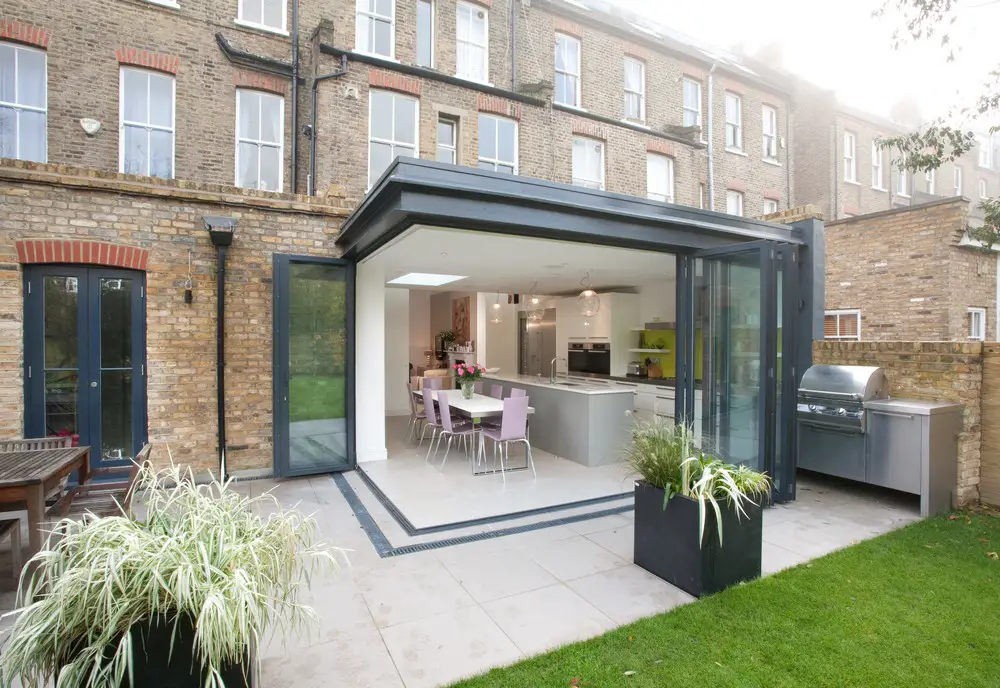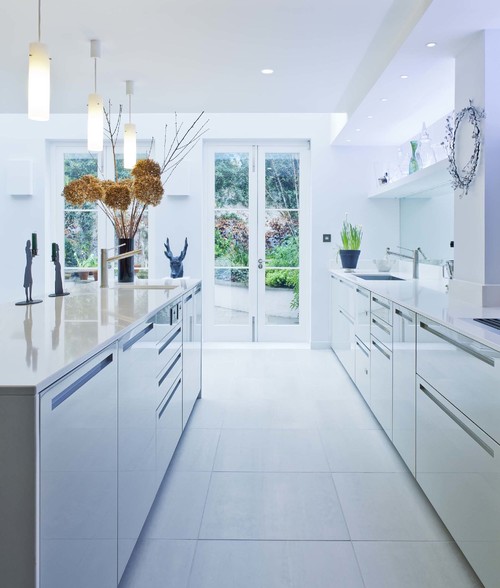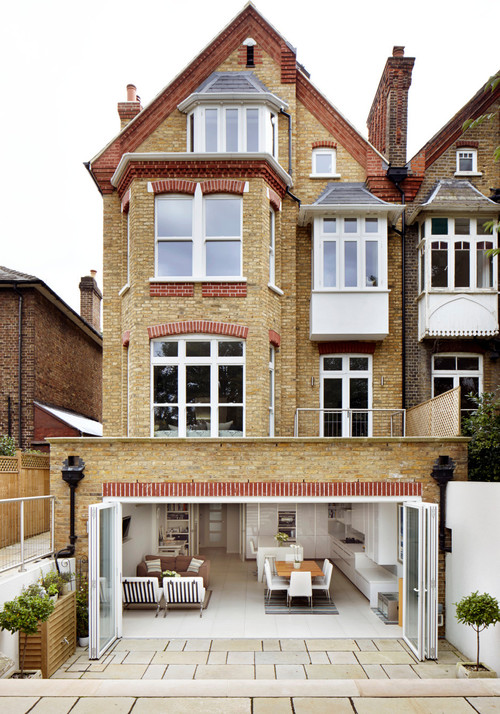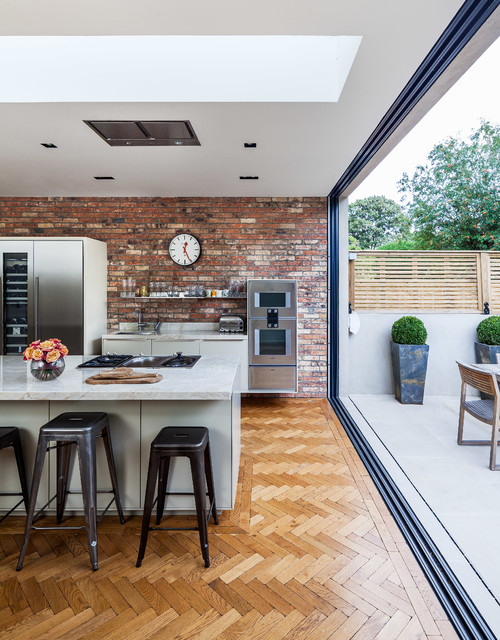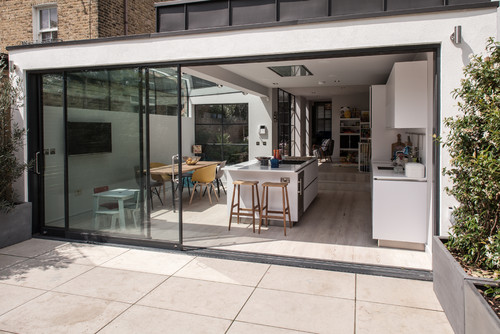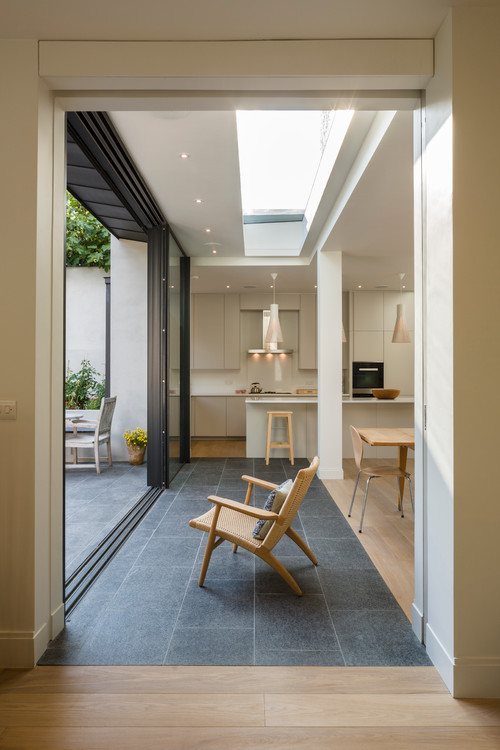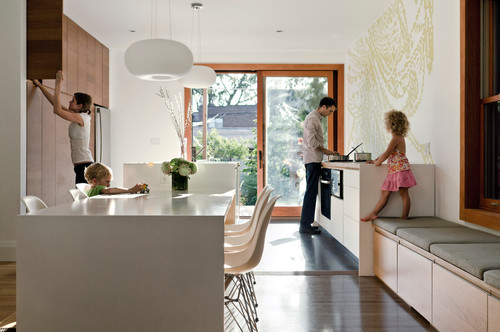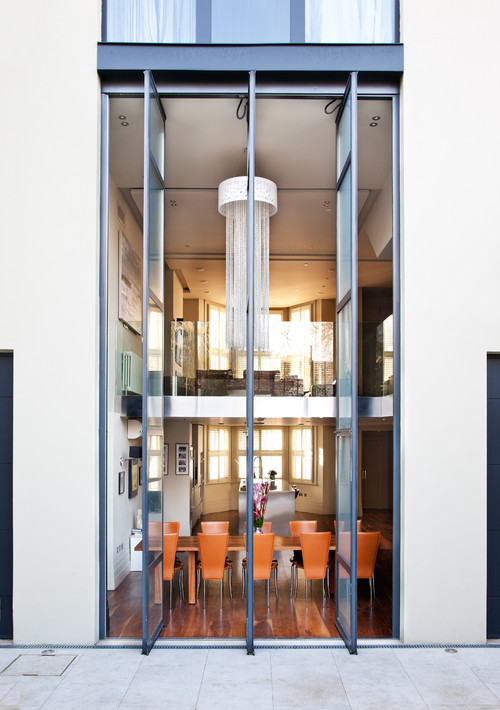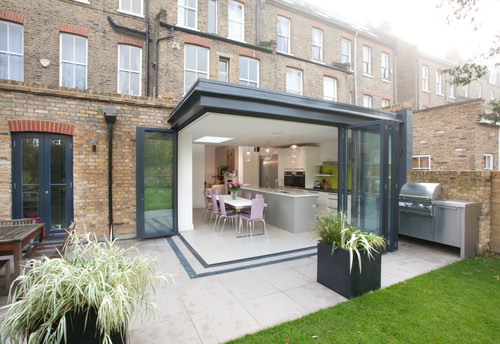What Are the Best Patio Doors to Choose for Your House Design?, Architecture and Interiors Images
What Are the Best Patio Doors to Choose for Your House Design?
Glazing will open up a home, transforming its look and blurring the boundary between inside and out – Architectural Article by Houzz
26 Sep 2017
The Best Patio Doors for Your House
Glazed doors will open up a home, transforming its look and blurring the boundary between inside and out, but which type should you pick?
Full article first published on Houzz
Sophie Baylis, Houzz Contributors
Sliding, bifolding, pocket, pivot and French… The world of patio doors is well stocked and sometimes overwhelming. This handy guide outlines the differences between the various styles and offers practical planning advice to make choosing patio doors as pain free as possible.
Professional advice from:
Josh Longville of Aspire Doors
Nick Dardalis of Aluminium Trade Supply
Rebecca Clayton of IQ Glass
Trust in quality
‘Other than the off-the-shelf ones found at builders’ merchants, most patio doors available from reputable firms will be of good quality,’ says Nick Dardalis of Aluminium Trade Supply. ‘This is because glazing products today must meet British or European standards for quality of material, security and thermal performance, as well as weather performance. Therefore, it’s unlikely you’ll find a patio door that does not meet or exceed these requirements.’
Choose your door style
French windows
A French patio set comprises two doors hinged on opposing sides of the frame that lock together in the middle. By using a two-door system, this style of patio set is more suitable for smaller spaces than its bifolding cousin.
Standard French window sizes in the UK are 1.2m, 1.5m and 1.8m. ‘Having two doors means you get as much glass as possible for your given width,’ says Josh Longville of Aspire Doors. ‘If you compare a three-door 1.8m bifold and a 1.8m French set, you’ll have significantly more glass in the latter. And as letting in light is one of the main attractions of patio doors, this can often tip the scales in French’s favour for smaller sizes.’
The biggest drawback of French windows is that sizes are limited because of the two-door design. ‘Once you go beyond 1.8m, supporting the extra-large leaves becomes incredibly difficult,’ explains Longville. ‘French sets can be extended with sidelights, but these are fixed, so you can’t open them up.’ You should consider patio planning
Contact door manufacturers and suppliers on Houzz
Bifold doors
A bifolding patio set consists of at least three individual leaves that fold and slide along a supporting track, enabling them to concertina together at the end of the frame. ‘This allows bifolds to open up much larger widths than other types of doors, starting at 1.8m and going beyond 4.8m,’ says Longville. ‘For homeowners with design at the top of their list of priorities, the potential aperture opened up by a bifolding set can create an impressive flowing space between your home and garden.’
Unfortunately, the running tracks that allow bifolds to operate can cause issues. ‘Garden debris, such as leaves and mud, can build up in the bottom track, resulting in the doors being difficult to open,’ says Longville. ‘To counteract this, many manufacturers design bifolds to be “top hung”, meaning the weight of the set is borne by the top track while the bottom acts solely as a guide. Although this helps, the track should still be kept clear to ensure ease of use.’
Pocket doors
The track and framing for pocket doors are built into the wall, allowing the sliding door to disappear into it, removing any barrier between indoors and out.
The number of panels that slide away into the wall will affect the depth of the pocket required. ‘Each pane sliding away needs its own track that’s 60mm deep. Therefore, if you want two sliding doors, you need a pocket that’s at least 125mm deep; to have three panels, you need a pocket that’s at least 185mm deep,’ explains Rebecca Clayton of IQ Glass.
‘If you don’t have the space within your wall to slide doors away into pockets, it may be possible to slide a single door over the internal or external face of a solid wall construction,’ adds Clayton. ‘We call this an open pocket.’
Considerations for pocket doors
‘If you have multiple panes moving in and out of the pocket, ensure the system has a cap or sealing detail between the sliding doors and the pocket to stop debris getting into the pocket and behind the sliding doors,’ advises Clayton.
Also, be aware that pocket doors need to be planned for in advance. ‘You’ll need to think about the construction of the wall to ensure you get the necessary insulation while allowing space for the pocket within it,’ continues Clayton. ‘Also, due to the thick depth required for the sliding tracks, multiple-pane pocket doors are only really suitable for new-build properties, or large extensions, where this depth can be designed into the wall structure from an early stage.’
Sliding doors
As pocket doors need a significant amount of depth within the cavity wall to slide away, they’re not always an option. If this is the case, consider sliding patio doors, which typically feature panels that slide sideways along a track and stack at the end of the frame.
‘When choosing a sliding patio door, especially slim-framed systems, check the thermal performance and whether the frames are thermally broken,’ advises Clayton. ‘This means there’s a piece of material that doesn’t conduct heat separating the exterior metal frame from the interior metal frame. If these are not separated, when the outside of the frame gets cold, so will the inside, which will form condensation internally and may lead to damp and damage to flooring.’
Installing sliding doors
It’s advisable to employ a professional window company or builder who knows how to install sliding doors. ‘As most sliding doors cover larger spans than French windows, accurate installation is essential for reliable operation and long-term peace of mind,’ advises Dardalis. ‘The glass must be fitted correctly, the frames must be fixed at the precise points, the heads and thresholds should be level and the whole installation plumb and square. The most common reason why doors and windows don’t open, close or lock correctly is bad installation. Many people try to save money by fitting them themselves, but, in the long-term, it probably won’t be the most cost-effective option.’
Lift and slide doors
Lift and slide patio doors are a sliding system with additional weather sealing, security and thermal performance.‘To close the doors, you slide the leaves as normal, then in the closed position you turn the locking handle 180 degrees and this lowers the sliding leaf into the base track, creating an effective seal of protection,’ explains Clayton.
Find out how to bring the outdoors into your kitchen
Pivot doors
Pivoting doors that turn 90 degrees to connect the interior to the garden make a stylish alternative to bifold or sliding doors. ‘Pivoting doors give you a slim surrounding frame and can be designed for large openings,’ says Clayton. ‘However, as the doors sit above the finished floor level, they don’t have as high a resistance to water and wind as typical French or sliding doors, so they aren’t suitable for very exposed areas.’
Clayton suggests thinking about how you intend to use your pivot doors. ‘Minimal pivoting doors give you a great sleek finish, but they’re not suitable for high-traffic areas due to their minimal framing,’ she says. ‘They should be thought of as large, attractive windows that can be opened and used as a door when required.’
Corner doors
When conventional doors won’t do, consider a 90-degree corner system, which will flood a dark corner with natural light, offer uninterrupted views and create a seamless transition from the inside of your home to the garden.
‘A supporting column is not always needed for this style of door,’ says Dardalis. ‘The integrity and supports will all be in the roof. Your builder or structural engineer can advise you further.’
Get expert advice on adding a rear extension
Residential Property Articles
Comments / photos for the What Are the Best Patio Doors to Choose for Your House Design? article page welcome

